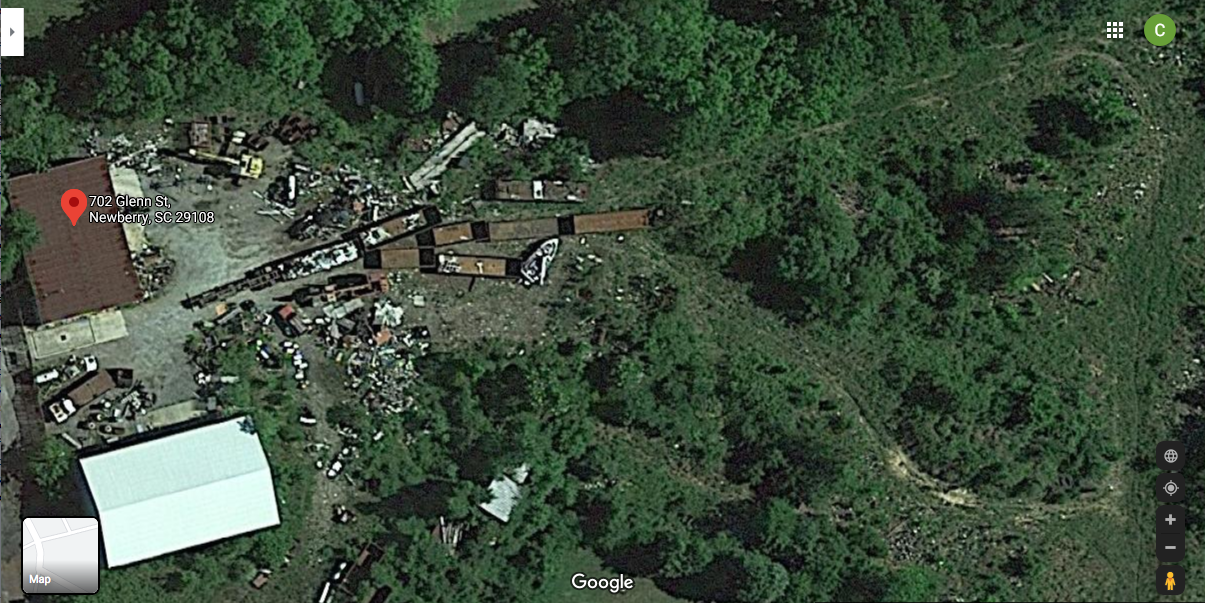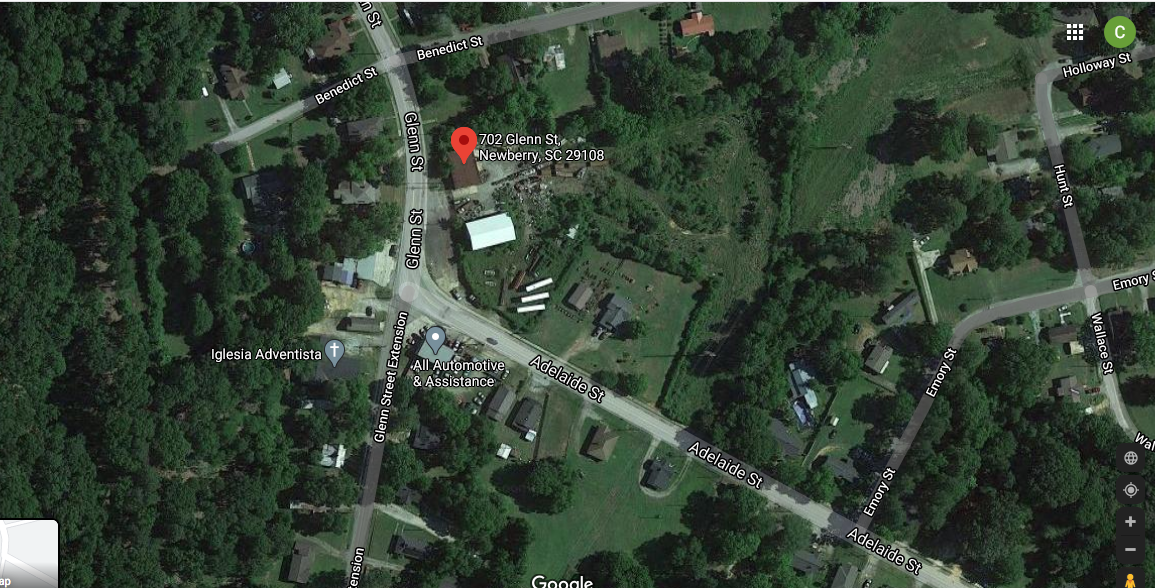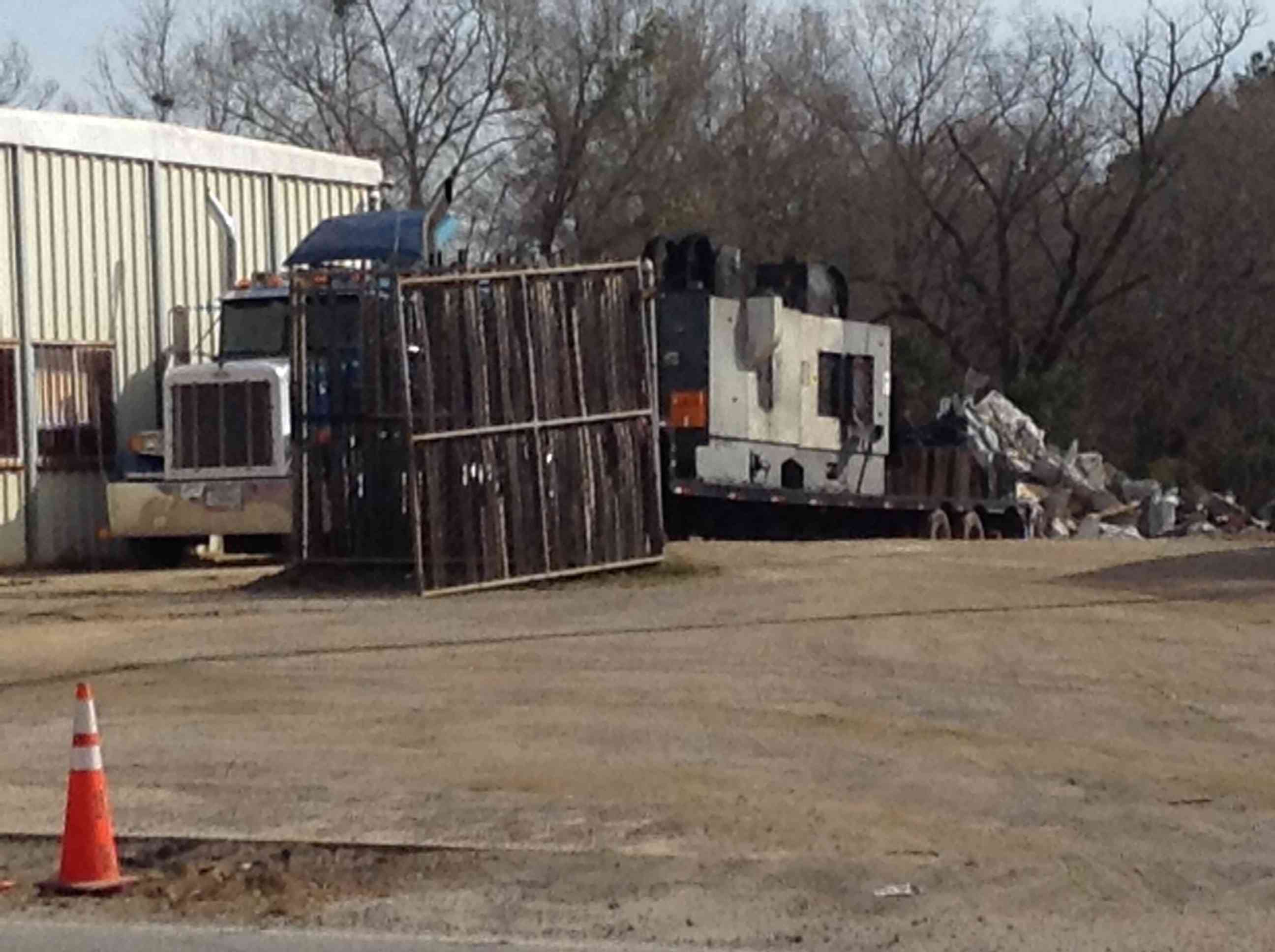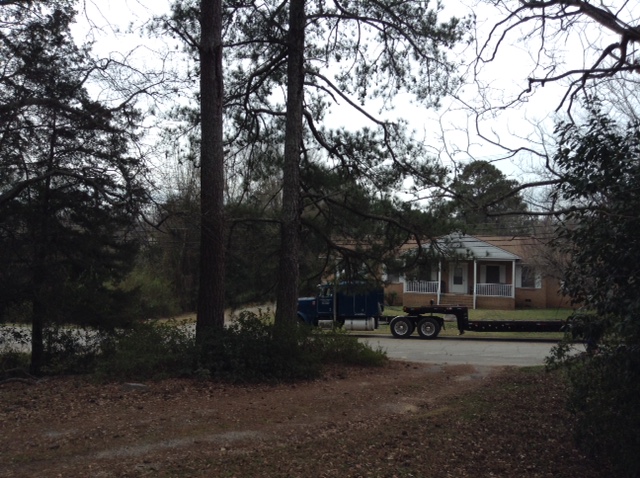The site was previously a small, commercial transfer station for recycling metal. The owner sold the place in the summer of 2020. The new owners were supposed to maintain only what the previous owner had done, after some clean-up. However, they now accept large equipment for dismantling (brought in on tractor-trailers). After offloading they use large claws on backhoes to rip the equipment apart and then use oxy-fuel torches to burn the metal into smaller pieces. They have also excavated a large hole hundreds of feet across and remove and burn through the buried material.
Update (03/29/21): An example of the process - pay close attention at the 50 second mark (Not a time-lapse video; the liquid metal and sparks are coming off the metal that fast due to the force of the torch.)
Update (03/29/21): A wider view (the wind was coming from the northeast):
The local neighborhood is one of the poorest in the city. It is predominantly Black, with some Brown and a few White residents. The smoke carries for hundreds of feet and affects 20-30 houses at any point in time, and 100 or more total.
Update (03/24/21): It is Spring, with mild temperatures. Unfortunately, the residents of Benedict, Emory, and Hunt Street can not open their windows without risking smoke coming into their houses if the site is burning metal and the wind is blowing their way.
Update (03/29/21): Here is a one hour time-lapse video (8x = 7:30). Don't be fooled by the dissipation - there was a lot of lift to the atmosphere. Some days the smoke barely gets off the ground.
The City of Newberry says the site is zoned for the use of oxy-fuel torches, although state law only allows the use of torches for maintenance.
Update (03/24/21): According to the City Manager's research, the site has been zoned industrial since the first zoning map was issued in 1973. There is very little documentation of the process, and the only objections documented were in opposition to locating a trailer park at the site. As noted in the South Carolina Encyclopedia, many public schools were still segregated through to the early 1970s.
The South Carolina Department of Health and Environmental Control (DHEC) says that since the site is burning metal and not paper or cardboard, they are not in violation of any Open Burning laws designed to prohibit the airborne transport of "unfiltered and untreated toxic pollutants and particles directly into the air at ground level, where they can be easily inhaled." Not only that, but South Carolina's own laws allow for the release of up to 200,000 pounds (100 tons) of toxic pollutants each year, with no public notice and no fees.
The Fire Chief says that if the site was burning the plastic off of wires, he could stop them, but not if they are burning the wires themselves.
Update (03/24/21): According to the Fire Department, Open Burning laws do not apply to work sites
Originally the site looked like

However, the heart-shaped area on the right has been excavated into a deep hole, in an on-going operation, as can be seen in the video below (from 03/29/21), taken from Hunt St., which is to the right (east) of the image. At 20 seconds into the video you can see the fuel tanks they use, and at the end of the video you can see the scale of the tank by comparing it to the employee standing next to it. I calculate the large tank can hold as much as 8,000lbs of oxygen or 3,000 lbs of propane (over 100 cubic feet).
From Emory St., March 12, 2021. The hissing sound you hear are from the two torches being used.
Download 1080p version of Emory St., March 12, 2021 (large)
The smoke can be yellow, blue and black. It is harsh and quickly irritates the eyes, nose and lungs. The smoke can carry in many directions. Below is from Benedict St., which is north of the site:
From Benedict St., March 12, 2021
Download 1080p version of Benedict St., March 12, 2021 (large)
And to the south:
From Adelaide St., Feb 15, 2021
Download 1080p version of Adelaide St., Feb 15, 2021 (large)
A map of the area:

To be specific, here is DHEC's definition of Open Burning:
(60) Open Burning - Means any fire or smoke-producing process which is not conducted in any boiler plant, furnace, high temperature processing unit, incinerator or flare, or in any other such equipment primarily designed for the combustion of fuel or waste material.
61-62.2 Prohibition of Open Burning
Clearly, as can be seen in the videos, the use of oxy-fuel torches to burn through metal is a process that creates a huge amount of smoke.
Additionally, DHEC exempts the use of oxy-acetylene torches for maintenance only:
Exemptions:
Section A, 14. Brazing, soldering, or welding equipment used for regular maintenance at the facility.
Air Permitting Exemption List
The dismantling of industrial equipment trucked in from off-site is clearly not maintenance.
Here is an example of the equipment that they bring in for dismantling. The truck in the image below came through the local neighborhood:
 .
.
Here is the same truck leaving:
 .
.
Update (03/30/21): Changed "acetylene" to "oxy-fuel," as the fuel being used is unknown. There appears to be a large tank marked "Propane" on-site, and propane is often used in salvage operations due to its low cost.



 .
. .
.